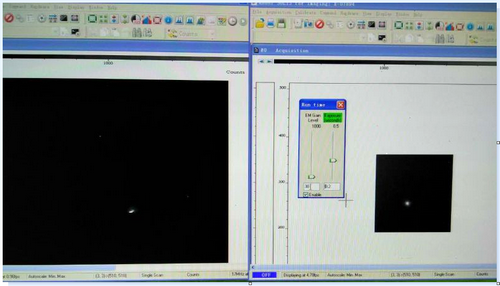Micius, the Quantaum science experimental satellite, is one of the first batch satellites of the space science pilot project of Chinese Academy of Sciences (CAS). The 1m telescope (Fig.1) at Xinglong Observatory of National Astronomical Observatories of Chinese Academy of Sciences (NAOC) is an important ground station of the Micius, which has undertaken many testing experiments and the satellite-ground integration experiment.
After the successful launch of Micius in the early morning of Aug. 16, 2016, the on-orbit test had been started. Establishing the communication link of the satellite and ground receiving telescope is one very important and difficult task for the 5 optical ground stations. Because the communication link is the foundation of the quantum science experiment. And, it needs to accurately align the high-speed flight satellite and the ground-based telescope when establishing the communication link.
In the early morning of Aug. 21, 2016, the 1m telescope of Xinglong Observatory succeeded in firstly capturing and tracking Micius by using the wide field beacon laser of the satellite. Micius directly got into the Fine TV, whose field of view is only 1'. And the tracking process is stable (Fig.2).
In the early morning of Aug. 26, the narrow field beacon laser of Micius was switched on, whose divergence angle is smaller, and the energy is more concentrated. By using the narrow field beacon laser, Micius and the 1m telescope succeeded in establishing the optical communication link between satellite and ground station. And, it firstly received the 850nm quantum experiment laser light. The 1m telescope is the first successfully finished the alignment test station among the 5 optical ground stations. And, in the early morning of Aug. 27, it successfully achieved the alignment verification again (Fig.3). At present, the ground station is in good condition and ready for satellite-ground integration experiment.
Xinglong Observatory of one of most primary observing stations of NAOC, and the largest optical astronomical observatory site in the continent of Asia. Apart from Xinglong Observatory, other optical telescopes in Delinha Qinghai, Nanshan Xinjiang, Lijiang Yunnan, and Ali Tibet will also track and capture "Micius" in the future.




Fig.3 the alignment verification test at Xinglong Observatory on Aug.27, 2016 (the red beam is the beacon laser of 1m telescope, and the green trajectory is the beacon laser of Micius)

Address: 20A Datun Road, Chaoyang District, Beijing, China code: 100012
Tel: 010-64888708 E-mail: naoc@nao.cas.cn

